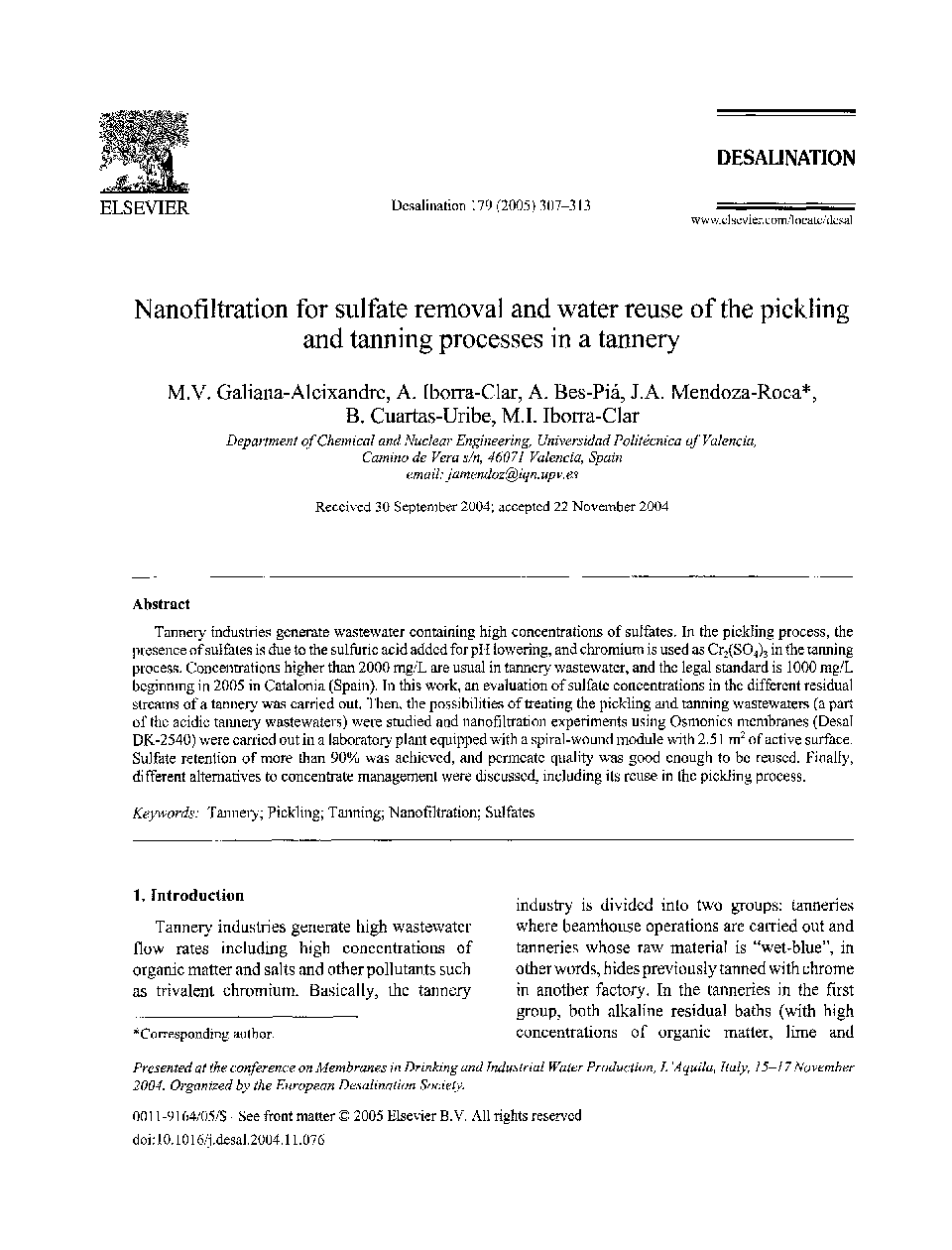| Article ID | Journal | Published Year | Pages | File Type |
|---|---|---|---|---|
| 9681114 | Desalination | 2005 | 7 Pages |
Abstract
Tannery industries generate wastewater containing high concentrations of sulfates. In the pickling process, the presence of sulfates is due to the sulfuric acid added for pH lowering, and chromium is used as Cr2(SO4)3 in the tanning process. Concentrations higher than 2000 mg/L are usual in tannery wastewater, and the legal standard is 1000 mg/L beginning in 2005 in Catalonia (Spain). In this work, an evaluation of sulfate concentrations in the different residual streams of a tannery was carried out. Then, the possibilities of treating the pickling and tanning wastewaters (a part of the acidic tannery wastewaters) were studied and nanofiltration experiments using Osmonics membranes (Desal DK-2540) were carried out in a laboratory plant equipped with a spiral-wound module with 2.51 m2 of active surface. Sulfate retention of more than 90% was achieved, and permeate quality was good enough to be reused. Finally, different alternatives to concentrate management were discussed, including its reuse in the pickling process.
Related Topics
Physical Sciences and Engineering
Chemical Engineering
Filtration and Separation
Authors
M.V. Galiana-Aleixandre, A. Iborra-Clar, B. Bes-Piá, J.A. Mendoza-Roca, B. Cuartas-Uribe, M.I. Iborra-Clar,
